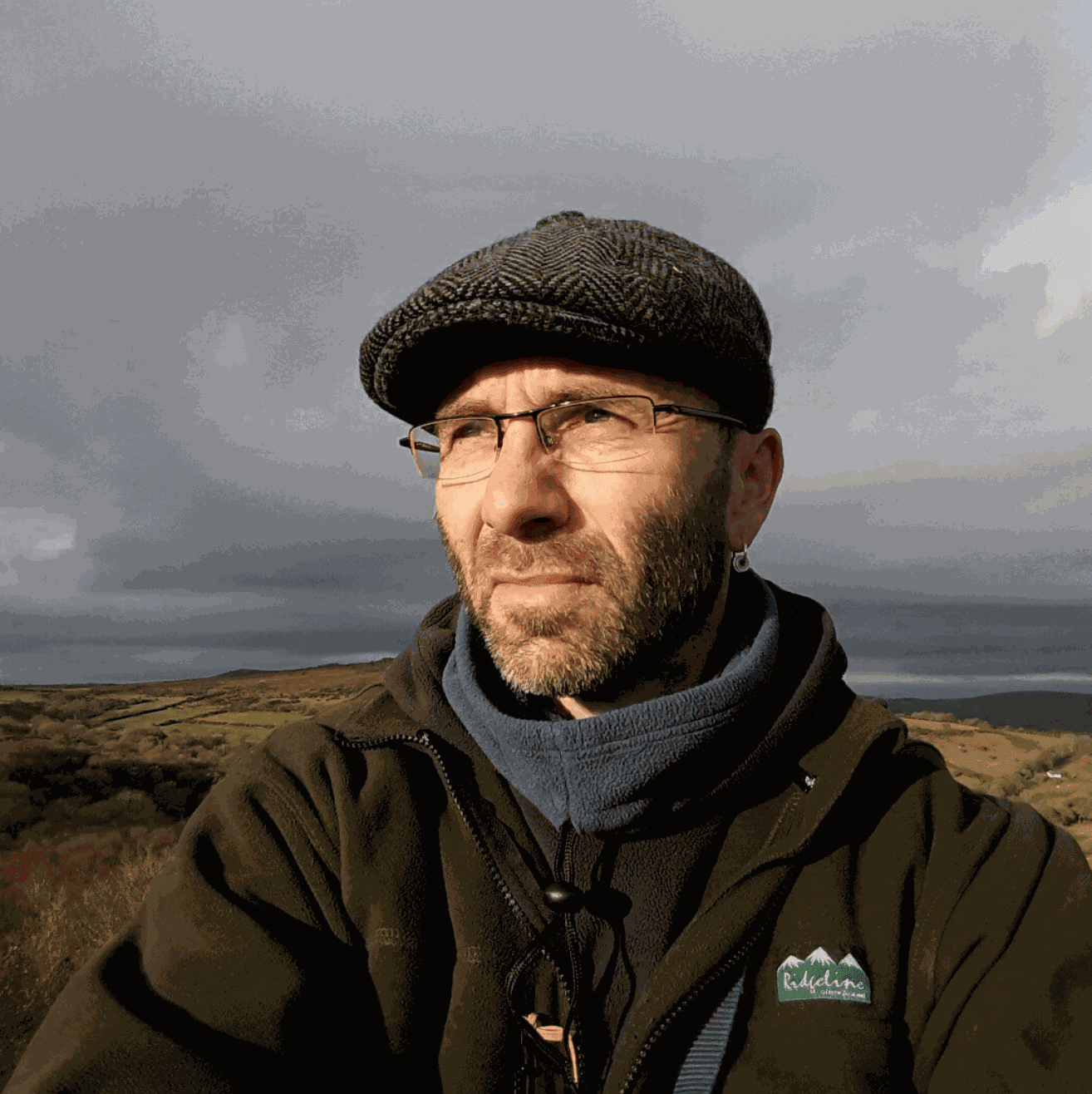Sculptor Stuart Turner fuses objects found in our natural, domestic and industrial landscapes. Natural and man-made materials are spliced and intertwined, and are testament to mankind’s changing relationship to the natural world and how we interact with it. The work occupies a liminal place that fuses sacred objects, practical tools, defunct electronic gadgetry and folksy craft to create items which allude to some lost intention or forgotten application.
Working the materials together, Turner creates individual assemblages, toolkits, mechanical objects that beg interpretation for a use that is not immediately obvious. They imply fabrication by, and meaning to, a tribe or community that would have known their use and function, or the part they played in some archaic ritual.
Animal hides, machine parts, slices of model landscape electrical wiring and old tools come together in his Dartmoor studio. Over time and conversation with each other, they morph into their correct form. In their making, Stuart allows for instinct and play to take hold and dictate their natural purpose.
His role as the custodian or curator of an archaic and dystopian array of the fragments of lost cultures and ancient traditions raises questions about the future, and the future of human needs in an increasingly self- absorbed society.
Each ‘toolkit’ plays with the viewers own interpretation and imagination. On first inspection you think you recognise a ‘use’ before you realise they are more playful or less well defined than at first glance, and speak of an unknown utility. Looking at objects behind glass reflects Turner’s own childhood experiences in old museum collections, with the fakes, frauds and assumptions of taxonomy and use applied by Victorian collectors and museologists, and with his father’s vocation as a museum curator and taxidermist.
These sculptures present a provocation for inquiry. Within an ‘ordinary reality’ setting the viewer is brought back to the present and a need to understand the tool’s use. Only when one realises it exists in its own inexplicable reality can one reflect on its otherness and the natural beauty of the raw materials crafted together.
Turner’s own relationship with the materials and tools of a craftsman align with his work on Dartmoor as a carpenter, hedge layer and coppice contractor. His practice of reading the changing relationship between humans and the nature we separate ourselves from, and yet yearn to connect with, and the inherent dichotomy of this, is personified within the objects he makes.
